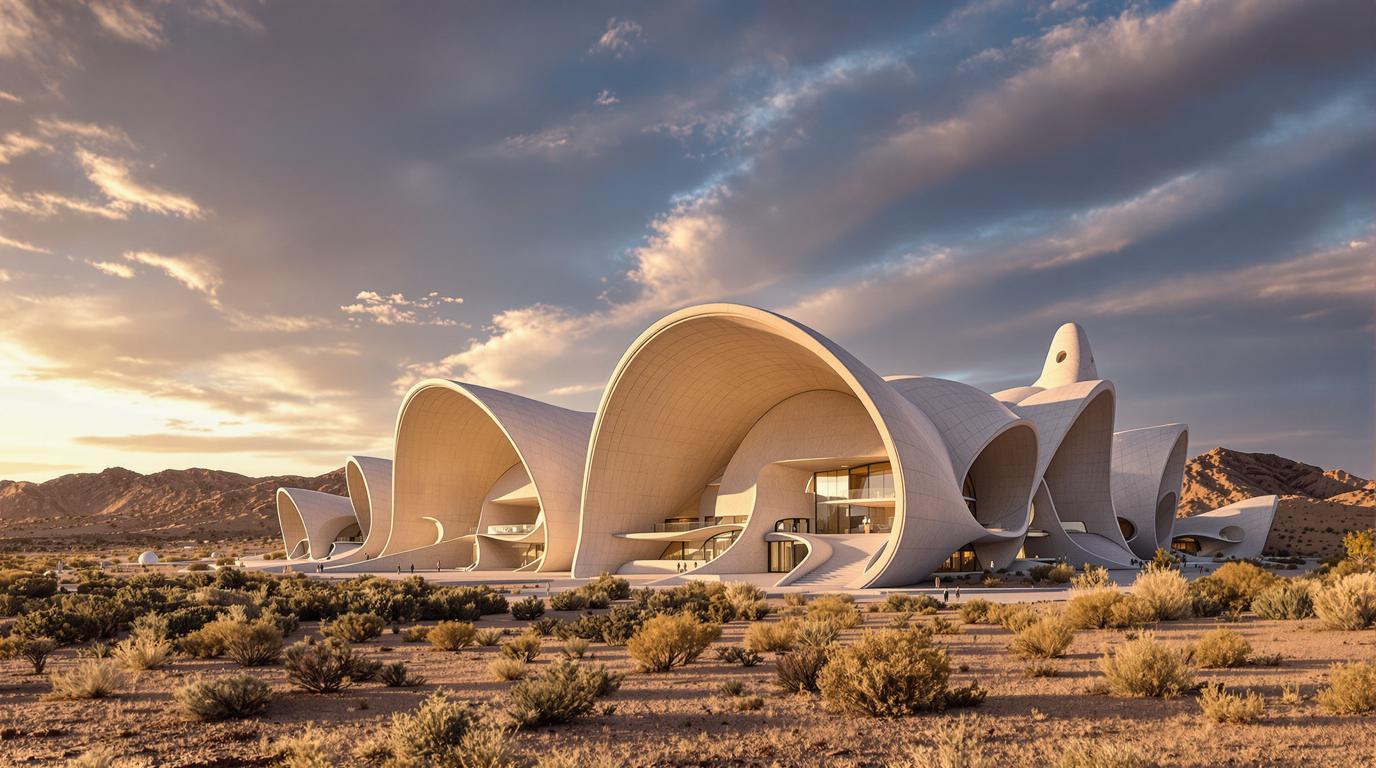Standing at the edge of Arizona’s high desert, watching bronze pour into handmade molds while concrete structures rise from the earth like ancient temples, I realized I’d stumbled upon something extraordinary. Arcosanti isn’t just another architectural curiosity – it’s America’s only living experiment in arcology, a radical fusion of architecture and ecology that’s been quietly reshaping how we think about cities for over five decades. While tourists flock to Fallingwater’s 140,000 annual visitors, fewer than 40,000 people discover this 3,732-foot elevation marvel that sits just 70 miles north of Phoenix.
This isn’t a museum piece frozen in time. It’s an ongoing laboratory where visionary architecture meets desert wilderness, where Paolo Soleri’s 1970 dream of compact, sustainable cities continues to unfold through the hands of volunteers and residents who’ve dedicated their lives to this extraordinary vision.
Unlike the crowds that swarm Frank Lloyd Wright’s Pennsylvania masterpiece, Arcosanti remains refreshingly intimate, its 40 permanent residents welcoming curious travelers into their world of bronze foundries, ceramic workshops, and structures that seem to grow organically from the high desert landscape.
The revolutionary urban experiment that challenges everything we know about cities
Why arcology represents the future of human settlements
Arcology combines “architecture” and “ecology” into a concept that Paolo Soleri believed could save humanity from urban sprawl. At Arcosanti, this philosophy becomes tangible reality through structures designed to house thousands in compact, self-sustaining communities. The site’s mixed-use buildings integrate living spaces with workshops, creating a density that preserves the surrounding 860 acres of pristine desert while fostering genuine human connection – something impossible in traditional suburban developments.
The ongoing construction that visitors can witness firsthand
What makes Arcosanti extraordinary is that it’s only 5% complete after 55 years, with construction continuing through workshops where participants help build the very structures they explore. The bronze foundry operates year-round, producing the famous Soleri windbells that fund the project, while barrel-vaulted buildings and the incomplete amphitheater canopy showcase innovative construction techniques using silt-cast concrete that creates structures both monumental and organic.
Hidden authenticity that defies mass tourism
The intimate scale that preserves genuine discovery
While Fallingwater requires advance booking months ahead for its overwhelmed tour schedule, Arcosanti’s guided tours maintain an intimate scale that allows genuine interaction with residents and builders. Tours reveal working spaces where ceramics are fired, bronze is cast, and architectural experiments continue daily, offering visitors the rare opportunity to witness utopian idealism in active practice rather than preserved exhibition.
The desert elevation advantage that Phoenix visitors miss
At 3,732 feet, Arcosanti enjoys significantly cooler temperatures than Phoenix’s scorching summer heat, with the elevation difference of over 2,600 feet creating a natural climate refuge. Summer visitors escape the Valley’s brutal 115-degree days for the high desert’s more manageable mid-90s, while the transition zone between Sonoran Desert and Colorado Plateau creates unique ecological diversity rarely found in Arizona’s lower elevations.
Travel Note: During my July visit, I watched sunrise paint the concrete apses golden while Phoenix baked 20 degrees hotter below. The elevation creates its own microclimate where desert wildflowers bloom and architectural experiments thrive in conditions impossible at lower elevations.
The exclusive experience that reveals America’s most ambitious urban vision
Access to working laboratories most tourists never see
Unlike traditional tourist destinations, Arcosanti opens its working foundry, ceramics studios, and construction sites to visitors through mandatory guided tours that reveal the daily reality of experimental living. Overnight stays in unique accommodations like the Sky Suite allow deeper immersion into this alternative lifestyle, where architecture students and international volunteers continue building Soleri’s vision one concrete pour at a time.
The living philosophy that separates Arcosanti from planned communities
While places like Biosphere 2 focus on closed ecological systems, Arcosanti integrates human settlement with natural processes through innovative urban design. The project’s volunteer-driven construction model has attracted thousands of unpaid contributors over decades, creating a communal ethos that distinguishes it from corporate planned communities or government urban experiments.
Insider access and practical secrets
How to experience Arcosanti beyond the standard tour
Summer 2025 workshops offer hands-on building experience, though specific schedules and costs require direct contact with the Cosanti Foundation. The bronze foundry operates most actively during cooler months, but summer visitors witness construction activity and can explore the site’s amphitheater, barrel vaults, and mixed-use residential spaces that showcase arcology principles in practice.
The strategic timing that maximizes your desert architectural adventure
Unlike Sedona’s crowds 60 miles north, Arcosanti’s high desert location offers year-round accessibility with summer’s elevation advantage providing natural air conditioning. The site’s proximity to Jerome’s artistic community and Tucson’s innovative desert architecture creates opportunities for architectural pilgrimage that reveals the Southwest’s most visionary building traditions.
Frequently Asked Questions
Do I need advance reservations to visit Arcosanti?
Yes, guided tours are mandatory for public access, and overnight accommodations require advance booking. Unlike Fallingwater’s months-long wait lists, Arcosanti typically accommodates same-week requests, though summer workshops fill quickly.
What makes Arcosanti different from other planned communities?
Arcosanti focuses on arcology – integrating architecture with ecology in compact urban forms – rather than suburban sprawl. The volunteer-built nature and ongoing construction create a living laboratory rather than a finished development.
Can I participate in actual construction work?
Workshop programs allow visitors to contribute to ongoing construction, from bronze casting to concrete work, though specific programs and costs vary seasonally.
How does the elevation affect the desert experience?
At 3,732 feet, Arcosanti stays significantly cooler than Phoenix while offering transition zone ecology between Sonoran Desert and Colorado Plateau, creating unique wildlife viewing and hiking opportunities.
Arcosanti represents more than architectural tourism – it’s a glimpse into humanity’s potential future, where cities work with rather than against natural systems. While mainstream architectural pilgrims crowd Wright’s Pennsylvania house, this Arizona experiment continues evolving, offering visitors the rare opportunity to witness utopian idealism in active practice rather than preserved exhibition.
